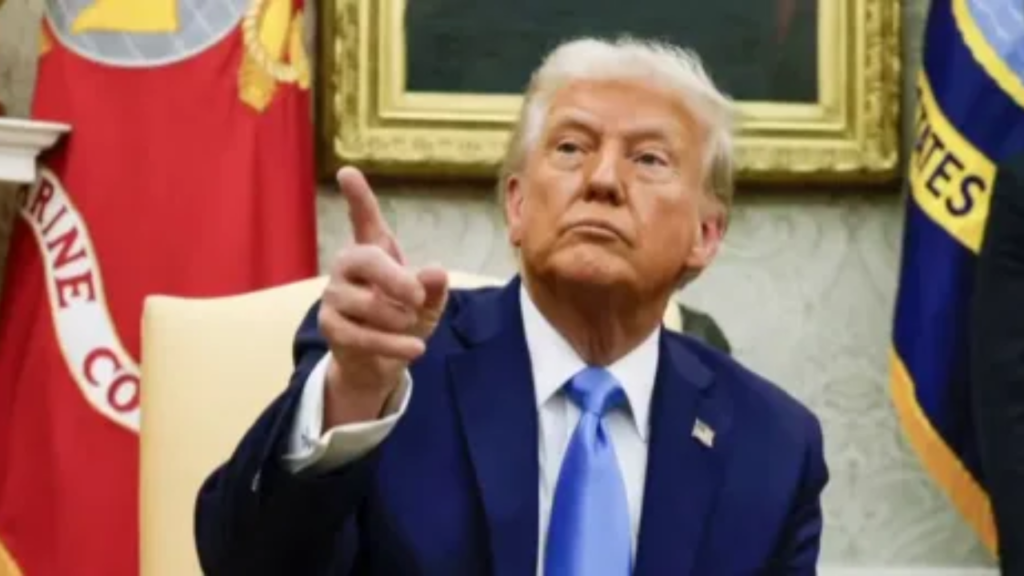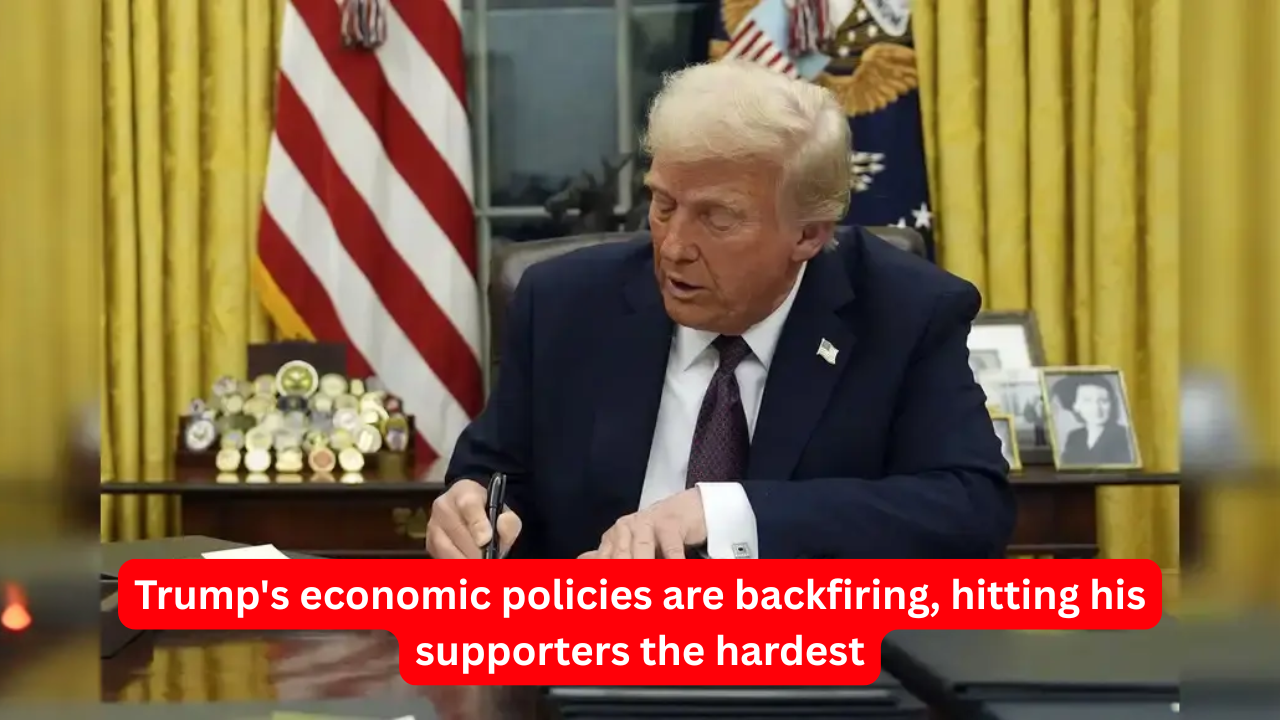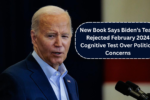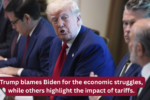In recent years, former President Donald Trump’s economic policies, once touted as a boon for American workers, are facing growing scrutiny. Despite initial enthusiasm, it’s becoming clear that the economic fallout from his decisions is hitting hardest among the very voters who supported him the most. A deepening economic mess, marked by job losses, price hikes, and shrinking government support, is forcing many of his supporters to reconsider their support.
Economic Decline and Public Disillusionment
Trump’s handling of the economy has come under fire in recent months. A CNN poll released in March 2025 reveals that 56% of Americans disapprove of how the former president has managed the economy, with a significant portion of that disapproval coming from working-class voters who once backed his promises of economic prosperity. This shift is largely attributed to the administration’s controversial economic policies, including high tariffs, government spending cuts, and reductions in social services.
The United States’ GDP contracted by 0.3% in the first quarter of 2025, a worrying sign of a slowdown that many experts blame on the Trump administration’s trade policies. These policies, including heavy tariffs on imports, were intended to strengthen American manufacturing but have led to increased costs for consumers. These tariff-induced price hikes have impacted everyday goods, from electronics to clothing, frustrating Americans who were promised lower costs.
For many voters, especially those in the Midwest and Rust Belt who supported Trump in 2016 and 2020, these economic policies are beginning to backfire. The surge in imports ahead of tariff hikes has had unintended consequences, including rising consumer prices and a stunted economic recovery.
Strained Voter Support
Trump’s support among his base is increasingly fragile. Voters who once rallied behind him for his promise of job creation and economic growth are now facing a different reality. A growing number of them are feeling the strain of his policies firsthand. Many of these individuals rely on federal programs such as Social Security, Medicaid, and unemployment benefits, which have been cut under Trump’s administration. These cuts have particularly hurt retirees and low-income families, who are now seeing the economic safety nets they depend on shrink or disappear.
According to a recent Wall Street Journal report, “retirees dependent on Social Security and families reliant on Medicaid are particularly vulnerable to these policy changes.” As these policies hit home, voters who once viewed Trump’s approach to governance as a solution are becoming disillusioned, leading to a decline in his approval ratings, particularly among those in rural and working-class areas.

Contradictions and Broken Promises
One of the most glaring contradictions in Trump’s economic messaging lies in his handling of tariffs. Originally, he promised that tariffs would make the U.S. economy more competitive and lower consumer costs. Yet, recent statements have revealed that his administration’s tariffs have actually resulted in higher prices for consumers, particularly in the case of imported goods. This inconsistency has caused frustration among voters who feel misled by the former president’s economic rhetoric.
Trump’s tariffs, which were supposed to protect American jobs, have instead led to higher production costs for U.S. manufacturers. As the price of raw materials and goods rises, manufacturers have been forced to pass those costs onto consumers, further straining the purchasing power of American families. This has resulted in a drop in public confidence, as the people who were promised affordable goods and job growth are now seeing their incomes stretched further.
The Road Ahead: A Growing Divide
As Trump continues his second term, the economic challenges and their impact on voters remain central to the broader political narrative. The once-strong relationship between the president and his base is fraying, with many of his supporters beginning to question his ability to deliver on the promises he made during his first term.
The economic situation presents a difficult challenge for Trump as he seeks to maintain support among working-class voters who are now feeling the direct effects of his policies. While some of his supporters continue to stand by him, the growing disillusionment among key voter groups could pose serious risks as the 2024 election approaches.
For more on U.S. economic trends and the latest government statistics, you can visit the U.S. Bureau of Economic Analysis and the U.S. Department of Labor for up-to-date reports on GDP, unemployment, and economic policy.
Conclusion
The economic mess created by Donald Trump’s policies is not just an abstract concept — it’s a real issue affecting the lives of American voters. As prices rise, jobs become scarcer, and government assistance shrinks, Trump’s base is beginning to see that the promises made in 2016 may not align with the reality of today’s economy. Whether or not Trump can turn this around and win back the support of his most loyal voters remains to be seen, but it’s clear that the consequences of his economic decisions are starting to take a toll on those who believed in him the most.

Pankaj Kumar is a skilled content writer at OTE News, focusing on breaking news, technology, and socio-political developments. With a background in Mass Communication, he brings a balanced perspective to his articles, ensuring clarity and reliability. Pankaj has a knack for simplifying complex topics for readers.
In his free time, he enjoys photography, traveling, and experimenting with new cuisines. His curiosity and dedication to truthful reporting make him a valuable contributor to OTE News.




